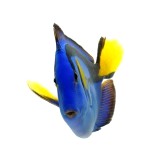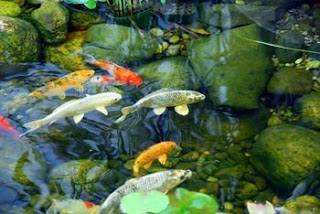Main Differences Between Freshwater and Saltwater Fish Tanks
By Clifford WoodsThere are primarily two types of aquariums for you to select from: freshwater or saltwater. Each type of tank has its own special advantages, specifications, and problems. It is very important to check them out full before you finally make your decision and buy one.
The Differences
Fish Species Among the most unique distinctions between freshwater and saltwater tanks is the varieties of fish. Freshwater fish are usually present in streams, ponds, rivers and lakes while saltwater fish are located in seas and oceans. Generally, freshwater fish are aquarium-raised while saltwater fish are from the wild.
Saltwater fish tend to be more attractive in color and are for sale in a greater variety than freshwater fish, yet can be more delicate to alterations in water temperature and chemical balance. Be sure you do extra research or consult with your local fish store in order to find out which fish will do well together.
Equipment When choosing your aquarium, take into account the location in your home that you wish to put the fish tank. Nearly every size tank will work well as a freshwater or saltwater aquarium; having said that a bigger fish tank is going to be simpler to keep chemically well balanced and will present numerous choices when choosing fish and add-ons. Most aquarium devices are made to work in both freshwater and saltwater aquariums.
Lighting is important in any type of fish tank to sustain the healthiness of the fish. Lighting specifications vary according to the kind of tank along with the fish and plants that live in it. Maintaining a consistent temperature and having an acceptable filtration system is necessary in any aquarium ecosystem.
Lastly, you should have a water testing kit. This will assist you in keeping track of the levels of your water and make changes as required to keep up an adequately well-balanced atmosphere.
Upkeep General maintenance does not vary a great deal between a freshwater and saltwater aquarium. With either choice, you will have to make sure that all devices are running correctly and replacing filter systems and cartridges as required. The container may also have to be cleaned out regularly.
Cleaning the fish tank will generally require you to replace between ten and twenty percent of the water quantity every other week. The water taken out throughout the course of vacuum-cleaning the gravel is generally enough.
Remember that the new water added will have to be treated based on the type of fish tank you are maintaining before being put into the aquarium. Washing the tank walls and examining the water for correct chemistry levels are also important parts of fish tank upkeep.
It would be a good idea to have an algae scraper on hand or perhaps an all-natural solution with beneficial microorganisms to get rid of the algae without harming the fish.
Making Your Choice Deciding between a freshwater or saltwater fish tank can be quite the complicated thing, even so it is not a choice that you need to make in a rush. Sustaining a fish tank is a commitment and you must be ready for the upkeep and expense of offering the best setting for your fish.
With the proper attention, aquariums can be quite a wonderful inclusion to your house that you can take pleasure in for a long time.
* * *
Clifford Woods is the CEO of Effective Environmental Services and Organic Environmental Technology.
We brew Beneficial Microorganisms and offer Natural Organic Solutions












